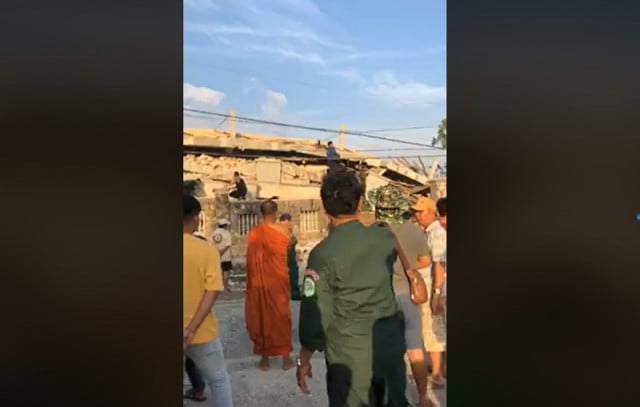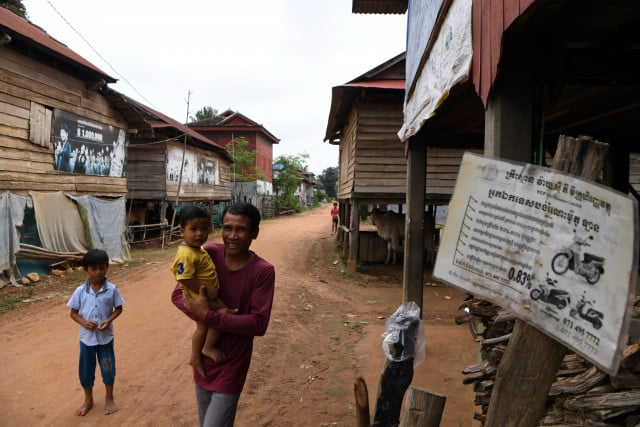What Does a Stone Doctor Do at Temples?
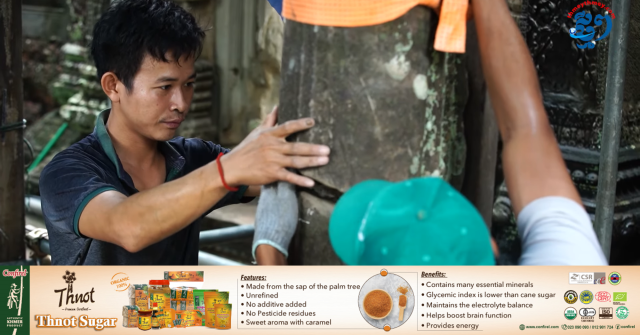
- By Sem Vanna
- February 4, 2024 7:30 PM
SIEM REAP — Behind the centuries-old monuments firmly standing in Cambodia today, there are many specialists such as Long Nary who devote their time and efforts to make sure they remain part of the country’s heritage for a long time to come. Temple restoration is complex, requiring experts in numerous fields working together to achieve this common goal.
_1707040570.png)
Long Nary heads the stone conservation team at the Department of Conservation of Monuments and Preventive Archaeology, which is part of the APSARA National Authority—the government institution that manages the Angkor Archeological Park in Siem Reap province. For the last 40 years or so, he has worked as a “stone doctor” to preserve the stones of the monuments and other structures.
_1707040622.png)
Which is no small task considering the extent of Angkor Park, a UNESCO World Heritage site spreading over 401 square kilometres. The capital of the Khmer empire for centuries, the site encompasses a large number of temples of all sizes, pagodas, canals, ancient roads and bridges, fortress-style walls, reservoirs, old village sites, and countless structures yet to be discovered.
_1707040659.png)
Nary is involved in the restoration work being conducted at Banteay Samre, a 12th century monument located about 30 kilometres from the center of Siem Reap city. He explained his work and the challenges faced to keep stones healthy.
_1707040707.png)
Sem Vanna: As mentioned before, temple stones experience many forms of surface deterioration requiring different forms of treatment. So, what are some of the commonly occurring stone diseases?
Long Nary: The restoration work is, one way or another, similar to the work of a medical doctor. Before hoarding equipment and gathering crews, restorers must know what kind of stone disease they are facing. Those diseases can range from flaking, sanding, scaling, cracking, exfoliating and more. Once the issue is understood, it is easier to carry out the treatment effectively.
_1707040970.png)
If you look here, this pillar in particular is experiencing a process called “sanding” where grains and dust particles break away from the main body of the stone. This means that the material has gradually lost its cohesive property. To fix this, we need a certain type of silicate. Similar to human skin, stones also have pores that can absorb substances used in restoration.
After we have applied the chemicals, we have to conduct routine checks to make sure that the process is heading in the desired direction.
_1707041007.png)
Sem Vanna: I can see you use a syringe and a needle to do the job… Do you use this equipment in a way similar to doctors when they inject in human flesh?
Long Nary: It is not the same. The needle is used to apply chemicals in tight spots in precise amounts. Restorers may also use the dripping method, just like the dripping serum at the hospital, to slowly apply small amounts of chemicals over time.
_1707041040.png)
Plus, to check the strength of the stones, I would normally use my own knuckles or a small metal rod to gently hit the observed area. The way the stone sounds can offer me some clues on the state of the stone.
_1707041089.png)
For example, if I know that the stone is experiencing scaling, I may use a combination of silicate, mortar and sand to fill in the damage. Some other time, if the damage is quite large, we can drill some holes and apply from the inside. As finishing touches, we may use simple paint brushes or sponges to apply a gentle coat of silicate on the surface. Once again, regular checks are required the following days. This work needs lots of patience and (wearing) protective gears.
_1707041133.png)
Sem Vanna: Let us take this pillar as an example again. Why is the stone damaged in this particular manner?
Long Nary: This is the pillar of a bridge. It withstands both the force exerted above and the moist soil below.
_1707041170.png)
Upon closer inspection, we can see many cracks occurring along the vertical line of the pillar running between the top and the bottom. This pillar, made from sandstone, is a type of rock that forms in layers from time to time horizontally on the ground.
_1707041213.png)
When the temple builders wanted to extract a boulder to make a tall pillar, they could not just dig vertically into the ground since it was impractical to do that. So, they would extract the sandstone horizontally from the quarry and tilted it upward vertically.
_1707041251.png)
Due to the natural way this sandstone piece was formed, it also effected the way the pillar is vertically eroded.
Generally, if a temple is largely abandoned over an extended period of time, it is exponentially harder to fix than the alternative one.
_1707041302.png)
Sem Vanna: The Angkor Park is a very large place with different types of temples, dikes, canals, reservoirs. Some are buried below ground and some are high on the mountains. How does your team manage to know which structure to restore first?
Long Nary: When there are so many monuments and limited human resources, we have to come up with a properly laid plan as to where and when to approach through priority. Back in 2015, we recruited 20 students to learn this job. Now, they work here.
_1707041339.png)
At the moment, we are also recruiting another 20 students to continue the restoration process. In addition to teaching directly here, I also help other teams at the temple of Banteay Chhmar [in Banteay Meanchey province] and the temple of Preah Pithu.
_1707041380.png)
Sem Vanna: Based on the construction materials, there are predominantly two types of temples: brick temples and stone temples. To you, which one is more prone to damage?
Long Nary: That is a good question. Normally, brick temples came before stone temples. Some are more than several centuries earlier. The former used layers of mortar, known as stucco, for coating. It would take quite a long time before the coating can be largely washed away.
_1707041418.png)
For me, I do not think there is a huge difference between the two types of structures when it comes to stone diseases. However, brick temples are harder to restore than stone temples. During the rainy season, it is not uncommon to see a number of bricks break loose from the temple. Since they are made from small individual bricks, it is also generally more challenging to stabilise the structure.
How quickly a temple erodes does not depend on its age alone. Where it is located and how it is maintained also play a crucial role.
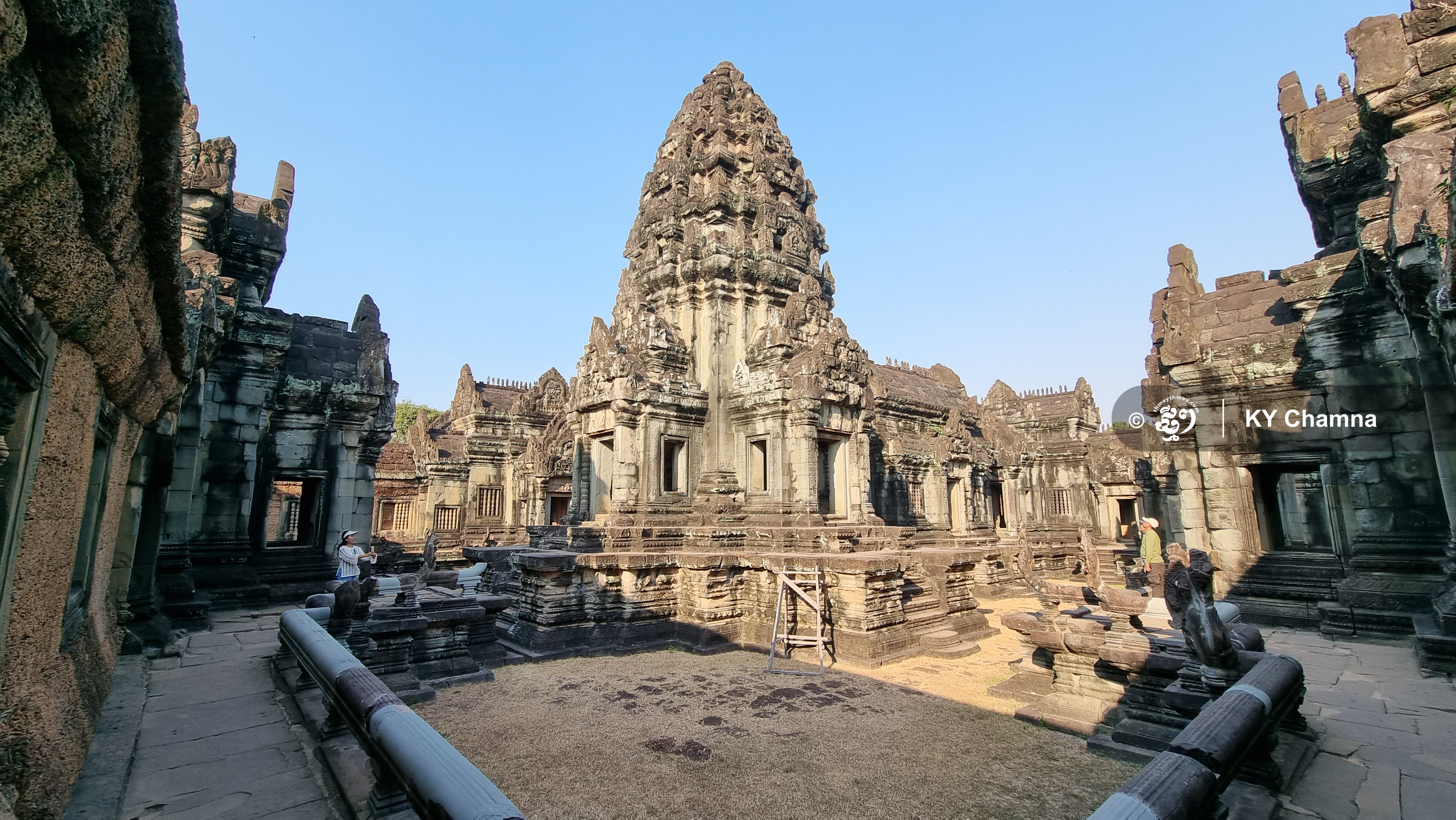
Sem Vanna: How would you view the future of your work and your team?
Long Nary: After this recruitment of 20 personnel supported by Germany (GIZ), it is also important to take into account the budget, the number of restoration projects and the intensity of the projects themselves. People here require patience and knowledge of chemistry as well as the urge to get up to date themselves with new technologies and equipment.
There are also many other large temple groups that demand attention namely Preah Vihear, Banteay Chhmar, Koh Ker and Sambor Prei Kuk. These temple groups are scattered across many regions of Cambodia.

Sem Vanna: Do you feel proud about your job?
Long Nary: As a person who grew up in Kampong Cham province, I learned about the Angkor Wat temple in a book in class. In 1987, I visited the site for the very first time. In 1988, I got the opportunity to work with the Indians on the restoration of Angkor Wat temple. I was cleaning moss basically. I was happy about the work even though it did not pay much. Jokingly speaking, perhaps I was a person who also used to serve the king during my past life and now I am here working to preserve what was created.
Even if I am not in the best of shape, even retired, I will continue to work if there is a need. However, if not, I will try to spend more time with my family.
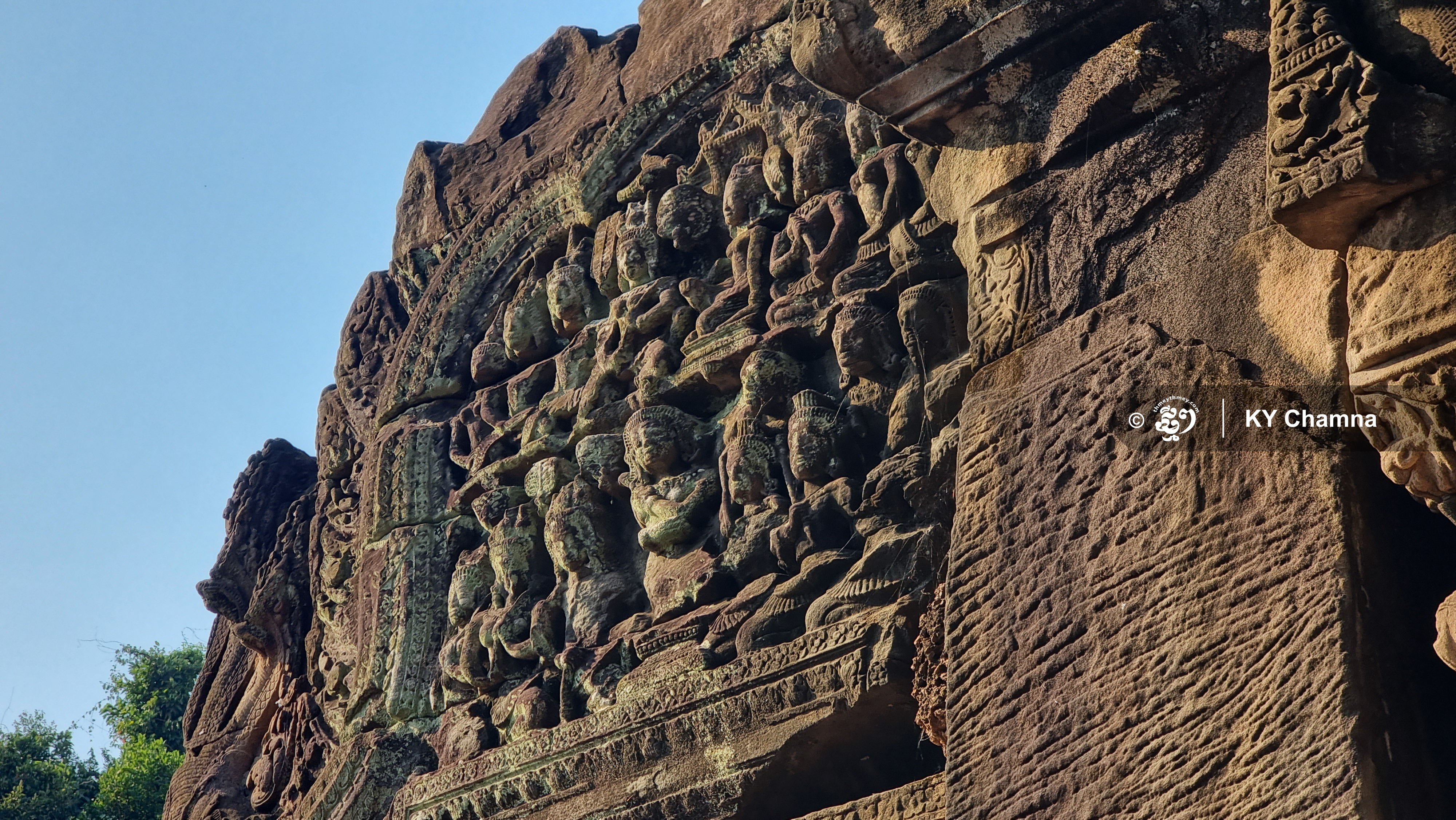
Conducted in Khmer for ThmeyThmey News, the interview was translated by Ky Chamna for Cambodianess News.
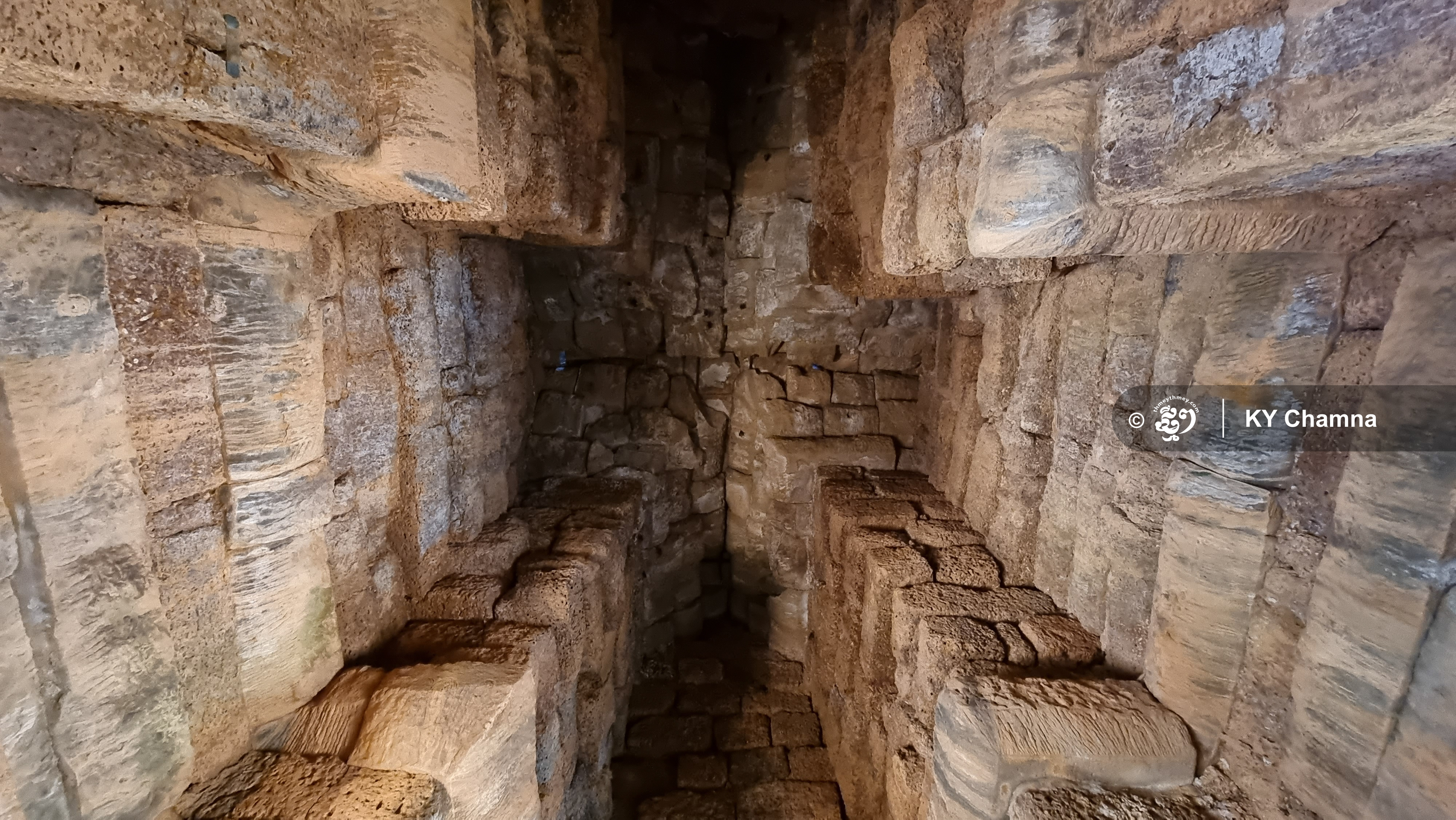
Watch the original interview in Khmer language: https://www.youtube.com/watch?v=YqXo1d0CrRI






